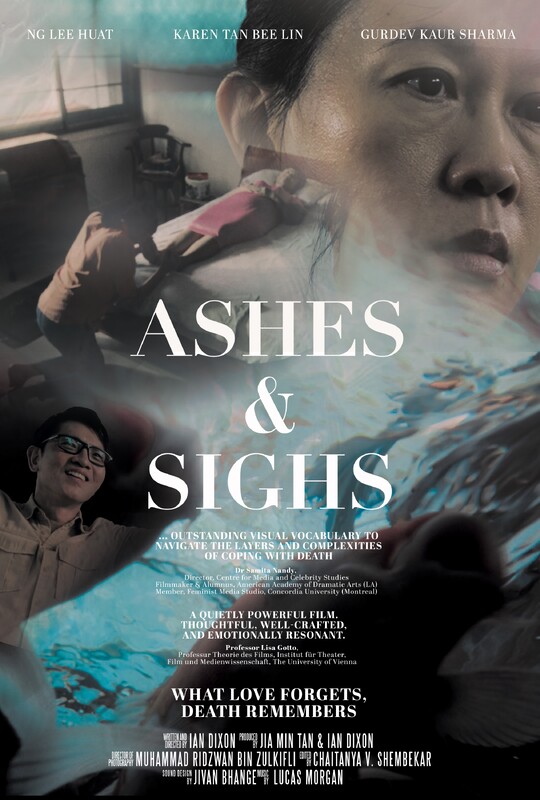
Court métrage 25:00 - dramatique - Singapore
Réalisé par / Directed by
Ian John Dixon
2025
Synopsis : Torn between duty and desire, Ai Chen struggles to honor her mother while facing the shadow of impending loss. As filial piety binds her to a domineering grandfather, she must find the courage to confront both his toxicity and her deepest fear—allowing herself the fragile grace of grief.
Singapore faces a problem: by 2040 our aging population will triple causing a ‘surging demand for palliative care’. Consequently, caregivers should benefit from shared support, which according to A/P Andy Ho (LKC Medicine/Psychology, NTU) relies on the arts to communicate. Our short film seeks to communicate End-of-Life (EoL) issues in a practical sense to a receptive general audience. We therefore expect the filmic object to be distributed throughout Singapore and the world via film festivals and potentially the Asian Film Archive; the book to be distributed through either Edinburgh University Press or Bloomsbury Academic Press. Significance The work not only investigates filmmaking in the Singaporean context, generating a short movie we are proud of, but also investigates drama’s relation to East-West cinematic space. As director, I have learned much about my inherited culture since arriving in Singapore seven years ago. Having consulted with experts and worked closely with Asian film practitioners and producers, this film not only dramatizes grieving in a compelling manner, it reaches to the heart of Asian cultures. Imagery and Movement The central images of this film are cats and koi fish. There is opposition in colour: orange contrasts blue; India contrasts Singapore; light contrasts darkness (dark corridors, darkened museum, light under door jambs, light under drawn blinds (like Samson and Delilah, 2009). In Ashes and Sighs, life is a slow inevitable track toward the acceptance of death – which is a positive thing incorporating the MCAT and Dignity Model E-o-L (end of life), so gimble, sliders and tracking shots will be vital, indeed the drama plays out at a distance – we track around people in distress, denying the pain, they fight, they conflict in heavy subtext, then we crash cut in to closeups for shock emotional effect. The camera looks through the eyes of death – watching closely – observing – in fact the camera lens represents Ai Chen’s deceased Mother.... hovering above the fishpond – drifting down corridors, past dinosaur skeletons and taxidermized animals – watching her daughter struggle – her deceased mother observing with love, with acceptance, with preternatural calm – even as her daughter struggles, denying the wisdom which only comes with death’s release Mother is the eyes through which we see the film unfold – can she – as an ancestor – guide and affect the lives of her daughter and father – despite their entrapment in the human realm? This is not a ghost film, but rather human life seen from the flip side – from purgatory... and only when Ai Chen lets go and weeps, only when her and Ye Ye have reconciled, can her Mother move on. So while Ai Chen is still ‘creating’ the film through actions and decisions, Mother is watching her struggle from the position of the divine. Mother now knows what Ai Chen cannot: that her own honest grief and sharing is key to her mother’s spiritual release and her own integration – even happiness.
Ce film est inscrit au marché du film.
Service offert lors de l'inscription.
Ce service est sous l'unique responsabilité des ayants droits, vous pouvez gérer ces paramètres dans votre "Espace Personnel" - Rubrique : "Industrie".